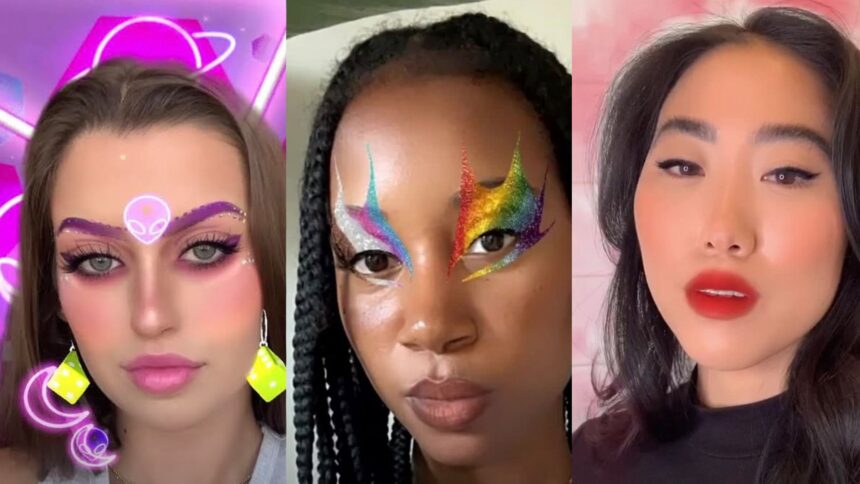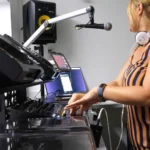Mirrors have always been associated with beauty, helping us reflect our aspirations and self-perceptions. But everything in the world is evolving, and mirrors are no exception. Just picture a mirror that goes beyond simply showing your reflection! It makes you look different, adds some elements to your appearance, gives recommendations tailored to you, and allows you to experiment with any beauty product—all without physically touching them and even leaving your home. No matter how futuristic it may sound, this is already the reality we’re living in now, the reality in which AR (augmented reality) has entered the beauty arena. And it’s not going to stop!
1. Virtual Stores: Interactive and Immersive
Hardly anyone will doubt the fact that online shopping is very convenient: you can shop from your sofa, all while drinking your favorite matcha latte. But some may still be lacking the interaction they get while visiting a brick-and-mortar store. So, AR enters the game, bridging the gap by letting brands create virtual store platforms. For example, the cosmetics and skincare brand Laura Mercier offers their website users a great virtual store experience. This way, customers can examine virtual shelves, interact with the products, read reviews, and even get personalized recommendations. So, any brand can combine the convenience of online shopping with the immersive nature of physical one. And the best part is that customers can visit the virtual store from anywhere, anytime, which makes it an effective tool for expanding the customer base.
2. Virtual Try-Ons: The New Age Fitting Room
Virtual try-ons can definitely be called one of the most popular applications of AR in the beauty world. This tech lets customers see how various products (makeup, clothes, jewelry, glasses, etc.) will look on them in reality. All a person needs is a smartphone: they open a camera or upload a photo and see any item they need applied to their looks in the virtual world. Brands like Estée Lauder or Benefit have successfully embraced virtual try-ons, letting their customers experiment with numerous looks, making them more confident in their purchase than ever. And if you’re a beauty retailer willing to follow their example, you can give Banuba’s TINT AR tool a try to add this marvel to your brand development.
3. Personalized Skincare Analysis: The Skin’s Best Friend
Many skincare brands have started to resort to AR and AI as well. For instance, Neutrogena’s Skin 360 app scans a user’s face to provide a detailed skin analysis. Their AI has learned from 10,000+ photos of people of various genders, skin tones, ages, and races to assist their customers in making their skin perfect.
There are even brands that not only give skincare recommendations based on the facial scan but also show the users how their face will look after applying the recommended products. It’s no surprise that such a personalized approach attracts customers and enhances their satisfaction and loyalty.
4. AR-Powered Tutorials and Training
Using AR may be a great way of educating both customers and staff. For example, interactive tutorials can help people learn more about how to apply makeup. Just imagine: instead of simply watching a video, they can follow step-by-step guidance overlaid directly onto their own faces here and now. As for teaching the employees, AR training can help them gain new skills and be more equipped to explain all the makeup or skincare nuances to the customers. A great example here may be Estée Lauder. They use AR to hold virtual classes where anyone can learn something new and develop their skills. This way, both customers and employees stay well-informed and confident in using the products.
5. Virtual Fragrance Experiences: Seems Impossible but Real
It’s hard to imagine how to make a scent go virtual. However, with AR, brands can add visual and auditory elements to a smell, making their customers fall in love with the scent. For instance, the Scent Room by Coty has done just that. A user wears a VR headset and starts touching and smelling scent stones. What’s interesting is that each stone is associated with its unique territory. So, when a person smells a stone, they start seeing the territory and hear pleasant sounds. All this brings the smell to life in a really memorable way. As a result, an individual can find their perfect fragrance match based on the VR experience they enjoyed most.
A Beautiful Future Awaits
Nowadays, the integration of AR and AI into the world of beauty is not just a passing trend. What can be said for sure is that they have already started to redefine the beauty industry. And no wonder! It’s a great way to show the competitors that you’re keeping up with the latest tech advancements and make your customers scream with excitement.
The future of beauty is definitely augmented. Every modern beauty brand should and can create AR experiences for their customers, making tech and beauty go hand in hand toward a promising future. So, it’s important to welcome AR and let all beauty brands shine like never before.


